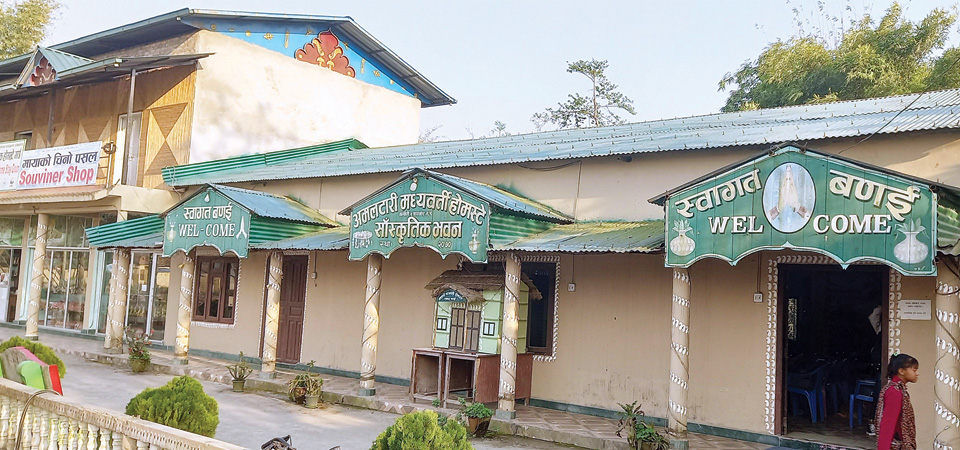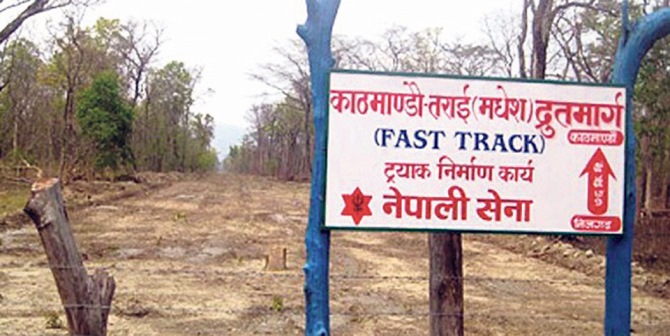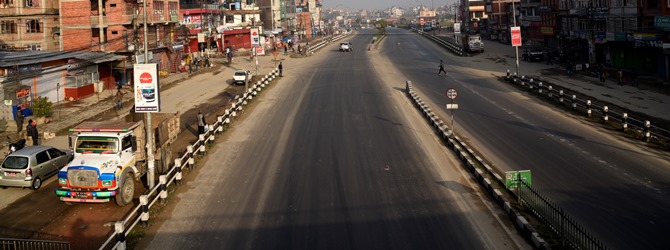Amaltari Homestay brings cheers to Tharu hosts

Nawalparasi (Baghkhor), Mar. 15: Nabin Mahato, 43, and his wife Jog Maya, 33, are happy with what they have now today. Parents of one child, they vividly remember how hard life was until eight years ago.
“It just feels like a dream come true in our life, as whatever we have today is all because of hardship, dedication and belief in ourselves that led us to join Homestay Association and be part of it in an effort to run the business at our own thatched-roof home for guests,” Mahato said.
The homestay Mahato and 30 others are now running at Baghkhor, in Kawaswoti Municipality-15, is one of the popular homestay destinations in Amaltari Buffer Zone Homestay.
Established in 2014, the homestay has so far welcomed over 80,000 guests in the past eight years. The homestay has mainly welcomed guests from Gandaki Province, whose government has enacted a policy encouraging its staff to visit the place once a year. In addition, it has also rolled welcome mat to visitors from much of the country, mostly from Kathmandu and Pokhara. Mahato and his family hardly get a day in a week for refreshment.
“We have at least six to eight guests at our homestay and hotel in a day and we have a duty to serve them to the fullest, particularly while serving typical Tharu food and performing cultural shows,” he said.
“People of the village used to heavily rely on agriculture and illegal timber collection to earn their livelihood, but those are things of the past now,” Mahato said.
“We have been earning up to Rs. 500,000 per month from our separate hotel business and up to Rs. 35,000 per month from the homestay service deducting 10 per cent levy by the association. From that earning, we have been able to save more than Rs. 200,000 per month from the combined business,” Mahato said.
Mahato thanked the federal government's Terai Arc Land (TAL) project launched in 2001 in collaboration with WWF Nepal, Department of Forest and Department of National Parks and Wildlife Conservation (DNPWC) that brought the concept of homestay to Nawalparasi for the first time.
Baghkhor, also known as Amaltari, is a buffer village, had support from the TAL project in establishing the homestay in early days with just 20 homestays. Not only has the project helped thousands of rural poor to improve their lives in sustainable ways, it has also made the people aware of the importance of wildlife conservation.
New approach to conservation, livelihood
Mahato and other locals who have been running homestay service at the village credited the government with helping them implement the new concept in the village at a time when no one in the village had an idea of homestay to improve the livelihood.
The model homestay at the buffer zone of the Chitwan National Park, which is also surrounded by four community forests in the area at Baghkhor in Amaltari, has now yielded a profound social and cultural transformation in the village, said Prem Shanker Mardaniya, Deputy Mayor and Chairman of the Amaltari Homestay. Around the buffer zone region, Amaltari provides jungle safari, a spot well known for seeing one-horn rhino and other wild animals.
“Today, our villagers don’t need to enter the forest illegally to collect timber, and the cases of wildlife poaching have sharply declined,” Mardaniya said.
“We ourselves are involved in the protection of the wildlife as we have now understood that these wild animals have also added natural and economic values to the homestay. That’s because many visitors coming for jungle jeep safari stay in our homestay,” he added.
“Homestay service has allowed both people and wildlife to coexist in peace in Baghkhor.”
Apart from Mahato’s family, 30 other households who had been running similar homestay services have benefited significantly and are now earning enough to live a decent life.
Recent News

Do not make expressions casting dout on election: EC
14 Apr, 2022
CM Bhatta says may New Year 2079 BS inspire positive thinking
14 Apr, 2022
Three new cases, 44 recoveries in 24 hours
14 Apr, 2022
689 climbers of 84 teams so far acquire permits for climbing various peaks this spring season
14 Apr, 2022
How the rising cost of living crisis is impacting Nepal
14 Apr, 2022
US military confirms an interstellar meteor collided with Earth
14 Apr, 2022
Valneva Covid vaccine approved for use in UK
14 Apr, 2022
Chair Prachanda highlights need of unity among Maoist, Communist forces
14 Apr, 2022
Ranbir Kapoor and Alia Bhatt: Bollywood toasts star couple on wedding
14 Apr, 2022
President Bhandari confers decorations (Photo Feature)
14 Apr, 2022





.jpg)




